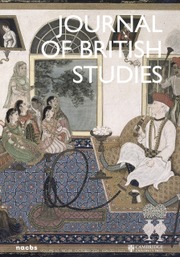Rotten Bodies—having read the book, I assume that this title would have been enough to repel early modern readers, perhaps stop them from even picking it up. It would have been their loss, because Kevin Siena has provided a fascinating, gripping, if sometimes ever-so-slightly overwhelming study that combines a de facto longue-durée perspective on plague, pestilence, putridity, and fever with an in-depth analysis of the eighteenth-century link between concepts of poverty and the body. Drawing on a large variety of source material, including a broad selection of medical treatises, newspaper articles, prison reports, and many others, Siena sets out to present a book that “concentrates on the perceived threat of plebeian bodies in the eighteenth century” (19), but, in the end, he does a lot more than that. Creating a multifaceted historiographic narrative that interweaves a long history of disease, especially of plague and fevers, with the history of perceptions of poverty, Siena's book far extends the limits set by its own title. It opens up a long panorama of disease, poverty, the relation between them, and the fear of both that preoccupied English society throughout the early modern period.
Siena explicitly chooses class as his main analytical category. One of his main hypotheses is that contemporary (medical) writers conceived of class, as a “scientific” and political category for social structure, in very physiological terms, assuming that poor bodies differed physically from non-poor ones. Siena manages to make this case extremely convincingly in the course of seven analytical chapters, saving an especially enlightening and fascinating experiment—the investigation of similarities between class-based conceptions of poor bodies and contemporary conceptions of racialized bodies—for the eighth, concluding chapter.
Siena starts, however, with sixteenth-century fears and perceptions of plague, traces them through the seventeenth and all the way into the nineteenth century, and is able to show that what Laurence Brockliss and Colin Jones, in The Medical World of Early Modern France (1997) called the “shadow of plague” for early modern France was present in English/British societies for much longer than previously assumed. Based on contemporaries’ fluid concepts of disease and the continued use of terms such as pestilence, Siena argues that fears and perceptions of, as well as associations with plague, persisted in the context of other diseases, especially the various fevers of the period. This results in something akin to a genealogy of pestilence and its (perceived or alleged) link with poverty.
Siena's study of how poor bodies were perceived and analyzed leads him from the theoretical to the increasingly practical, as the reader follows the fear of the poor and their diseases through hospitals, court houses, and especially the jails of the eighteenth century, where the aspect of “corruption” gains another facet. As Siena argues, “jail fever” became especially present as a successor of plague, both in medical texts and in the public imagination, which, according to him, may have been due to “the unique ability for jail fever to merge moral claims with medical ones” (116) and the fact that it was an “institutional disease” that became especially threatening in a time where “urban Britons saw buildings filled with paupers cropping up all around them” (117). One aspect that Siena manages to convey extremely well is the constant fear of proximity with “rotten” pauper bodies, which plagued especially urban dwellers in the eighteenth century. In view of the fact that he uses mostly “professional” texts rather than, for example, ego-documents by those concerned, this is rather remarkable, because even though these texts were produced within a discourse of fear, they usually did not describe the fear itself in great detail. The fact that the book so convincingly captures a general atmosphere of fear is thus very much Siena's own achievement as a historiographic narrator.
In a way, Siena has written the historiographic equivalent of a Sacher cake—highly enjoyable and extremely rich. Its chocolate glaze, for me, is clearly the cross-categorical class-race experiment in the concluding chapter, where the medical texts cited, and the convincing conclusions that Siena draws from them, are extremely intriguing. Not only do they show that contemporary medical professionals perceived class and race as physical and physiological makers and markers of bodies, and along very similar lines and in similar terms. They also invite a confrontation with studies of everyday medical and medico-cultural practices. Especially in the contemporary context of the West Indian colonies, the view of the medical texts that, for example, “[a]ssumptions of racial difference were thus hopelessly bound up in assumptions of economic difference” (241) might clash with layperson's experience of and participation in the structures that economic, medical, social, and other practices and arrangements had developed in the colonies. It might be extremely fruitful to bring these somewhat conflicting perspectives together to see if their contrasts shed light on how specific discursive practices became hegemonies in specific fields.
All in all, this book constantly opens up new insights and perspectives on its own subject; Siena is led from one productive hypothesis to the next. This makes it both a hugely enjoyable, rich, and profitable read and leads—at times—to the slightest feeling of satiation, which is, however, very soon overcome.


